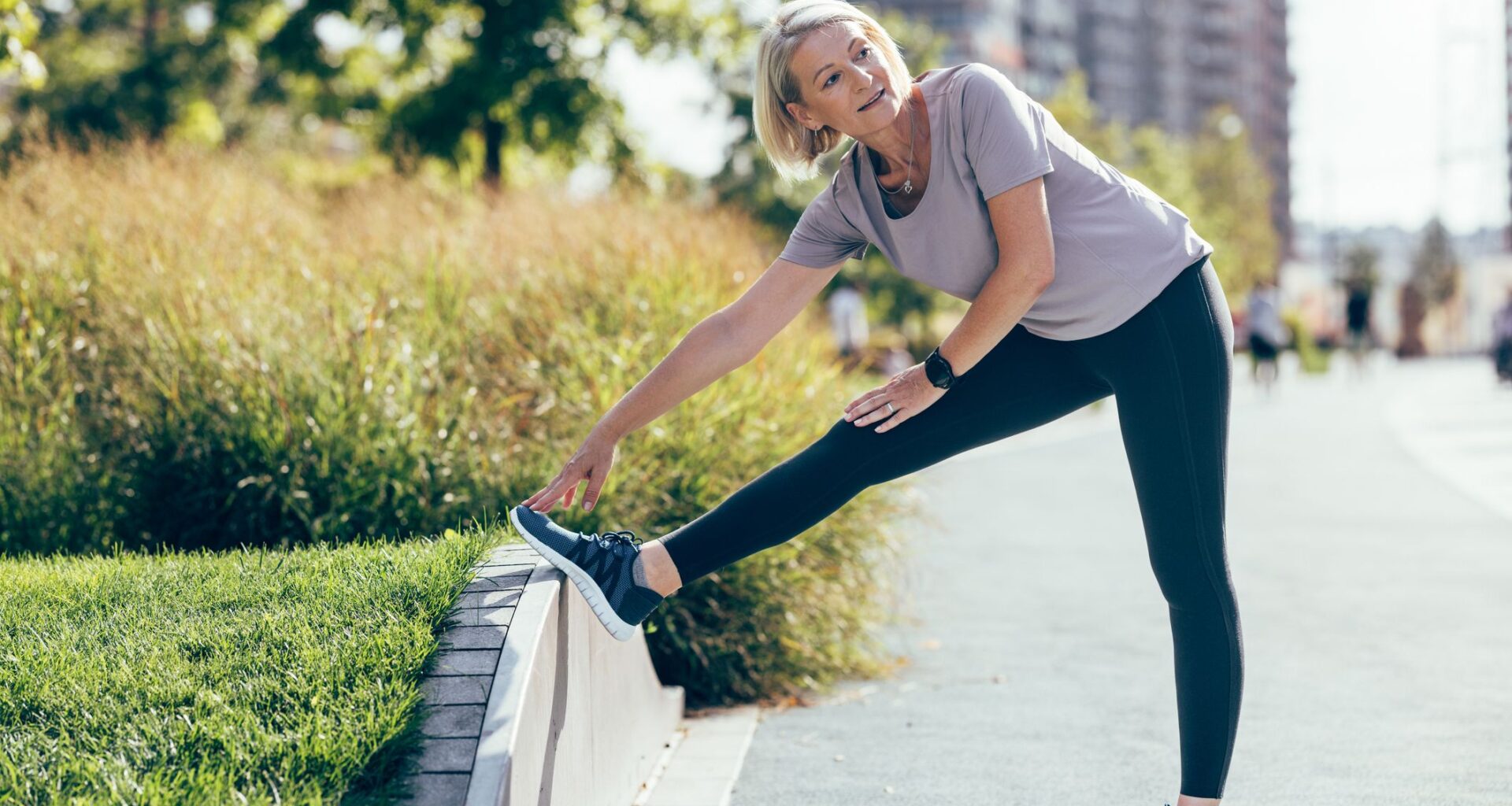While many of us think about stretching as something to do after a run or a strength-training session, lower-impact activities like walking can cause muscle stiffness or soreness, too. Even shorter walks can contribute to stiff muscles at the end of the day.
If you’re a regular walker and aim to hit a certain step count goal every day, NASM-certified personal trainer Mallory Fox suggests putting some time aside at the end of your walk to stretch.
“The necessity of stretching can vary based on individual fitness levels and goals. For casual walkers, a brief stretching routine can suffice, while those engaging in more strenuous walks may benefit from a more comprehensive stretching session,” says Fox. “Ultimately, listening to your body and incorporating stretching as part of your routine can enhance overall recovery and performance.”
You may like
“Stretching after physical activity is a positive habit, with benefits ranging from improved mental wellbeing to reduced physical stress.
“I find that stretching after every walk is beneficial, especially if the walk was long or intense.
“Post-walk stretching helps to gradually cool down the body, improve flexibility and reduce muscle stiffness. It also aids in preventing injuries by maintaining the elasticity of muscles and tendons.”
Here are Fox’s top stretches to do after a walk, with a static stretch, an active stretch and a dynamic stretch to functionally stretch your muscles.
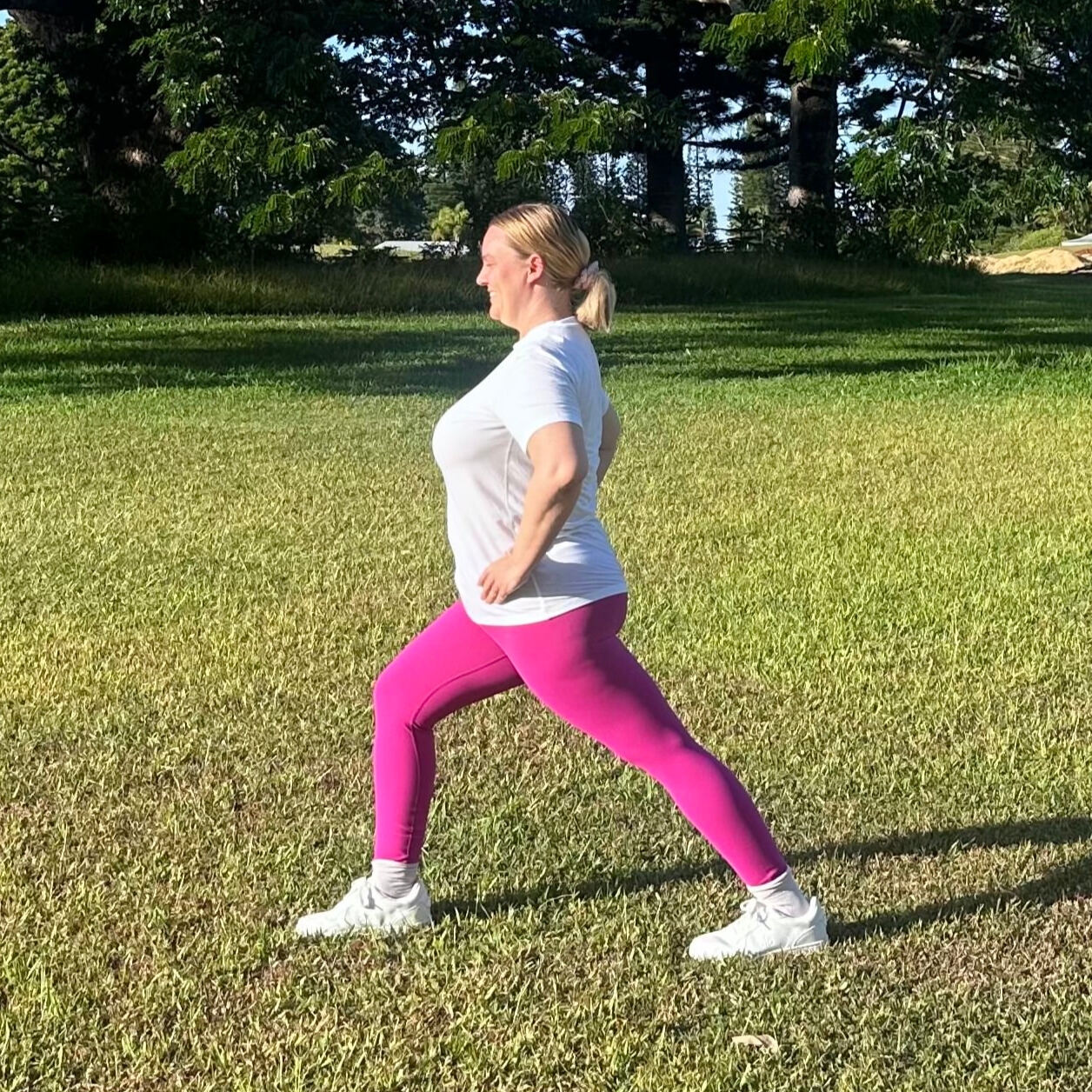
(Image credit: Mallory Fox)
Time: 30-60sec each side
Stand with your feet hip-width apart and step your right foot back, keeping it in line with your right hip.Keep your right leg straight and bend your left knee, pressing your right heel into the floor.Hold for 30-60 seconds, then switch legs.
Why Fox recommends this stretch: “The calf muscles (gastrocnemius and soleus) work hard while walking, especially on uneven terrain or on an incline/decline. A static stretch, where a stretch is held for 30-60 seconds, helps improve joint range of motion, decreases muscle hypertonicity [stiffness], and reduces the risk of soreness.”
Image 1 of 4
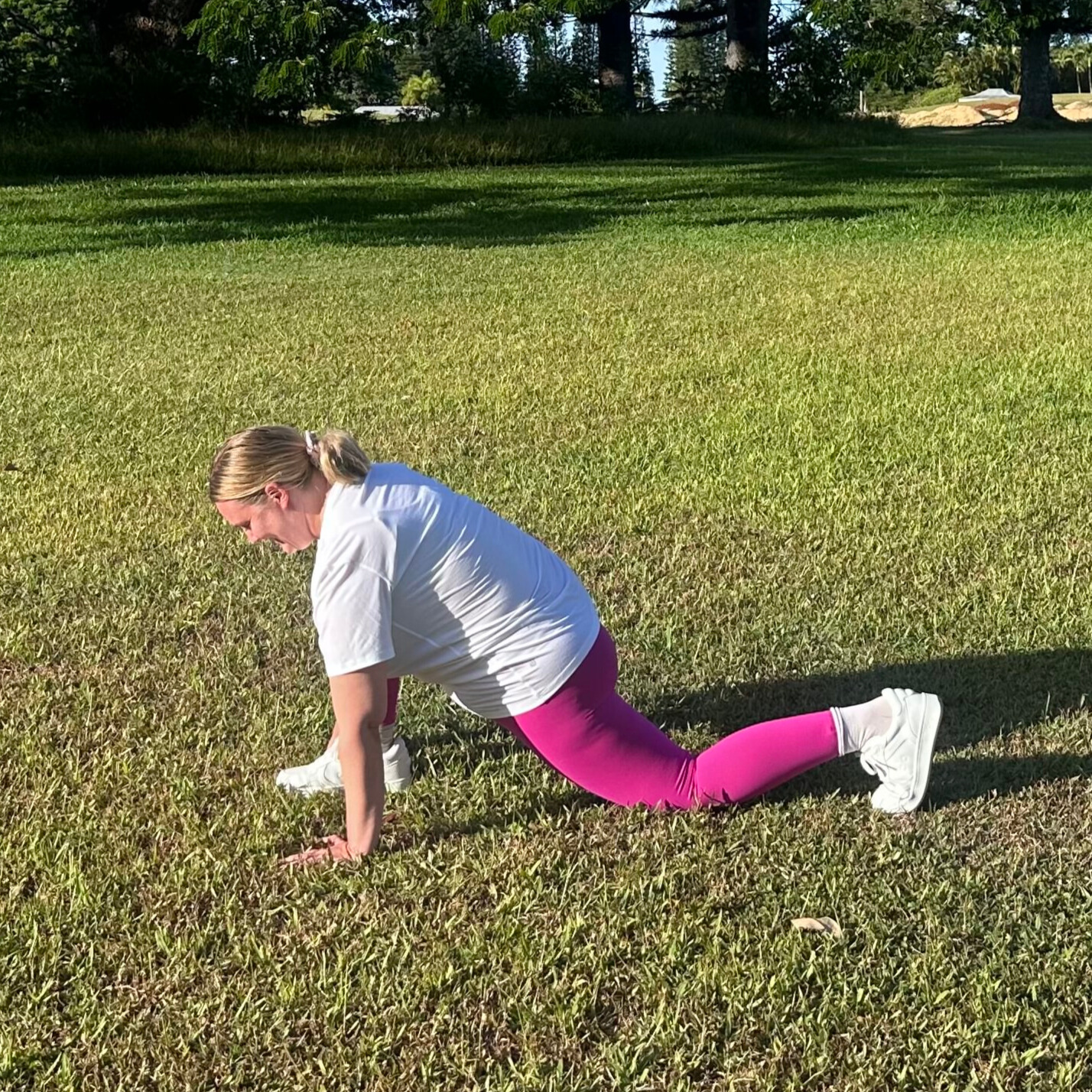 (Image credit: Mallory Fox)
(Image credit: Mallory Fox)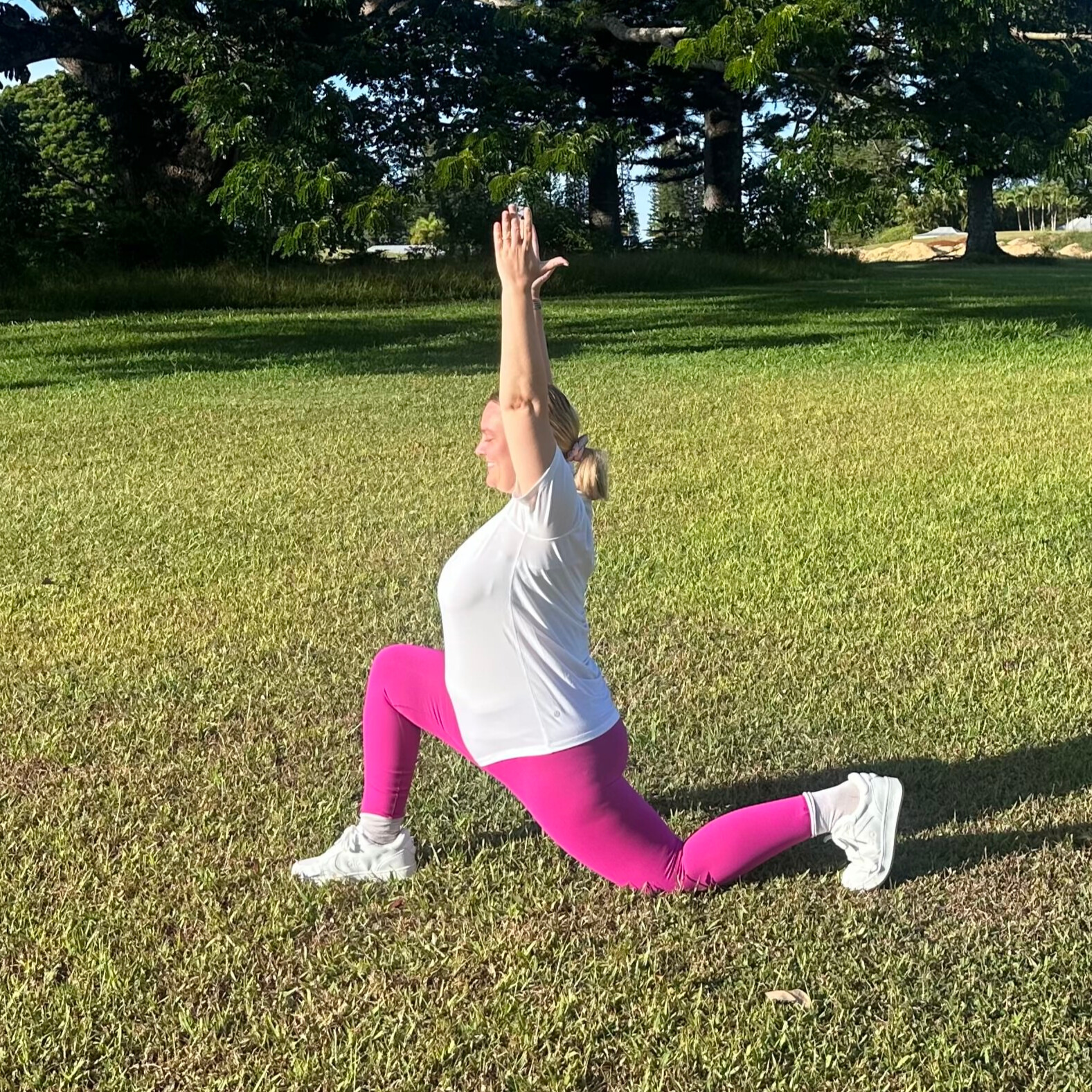 (Image credit: Mallory Fox)
(Image credit: Mallory Fox)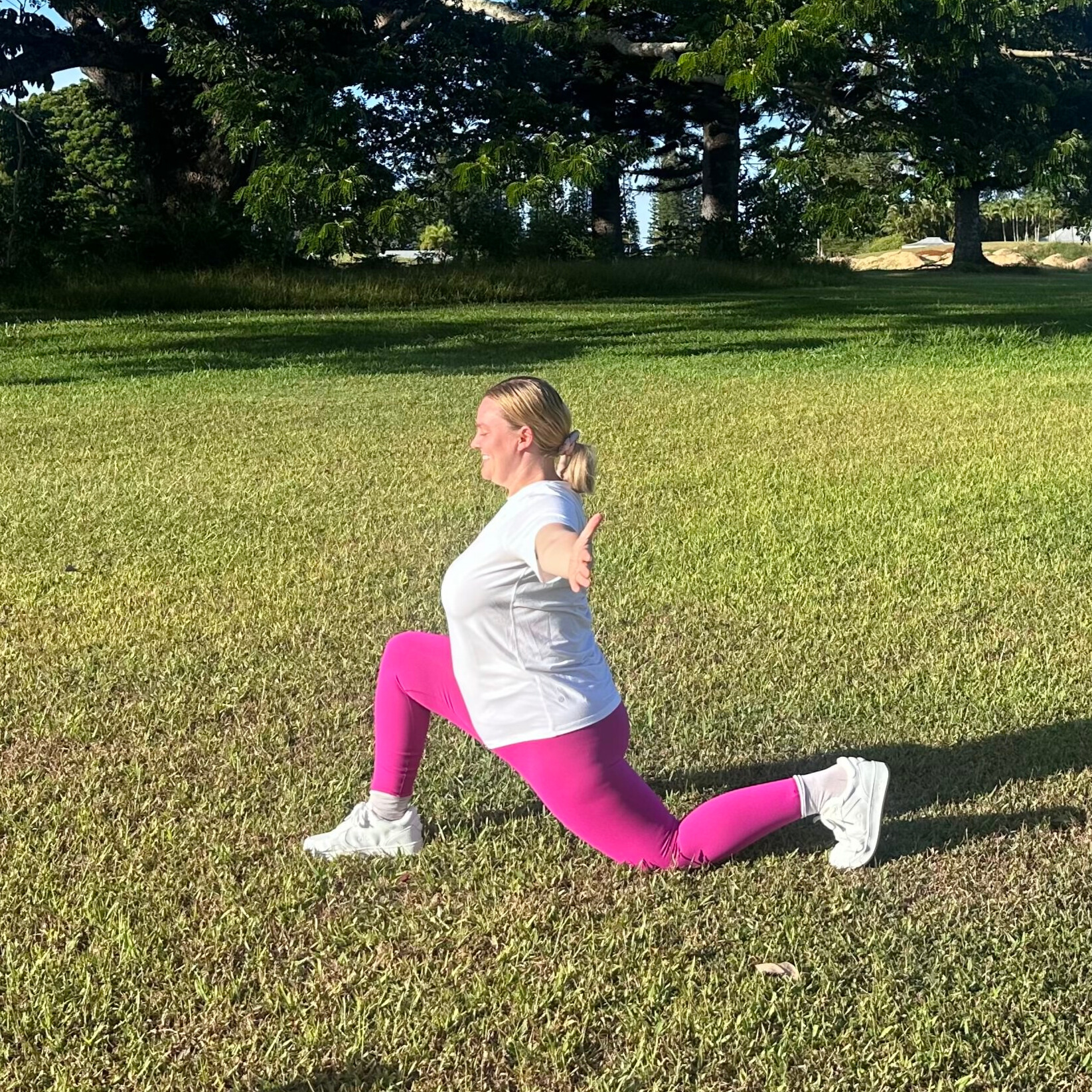 (Image credit: Mallory Fox)
(Image credit: Mallory Fox)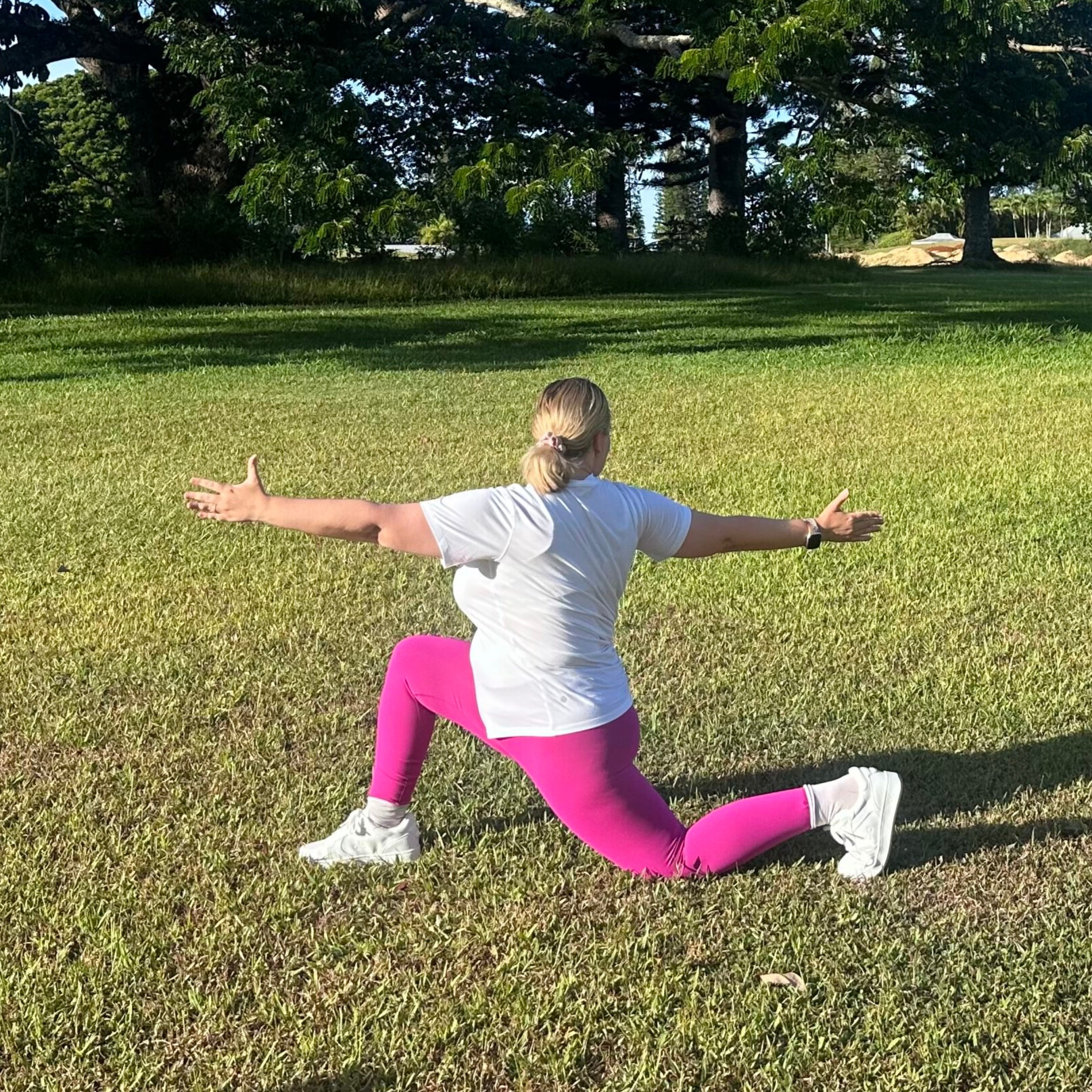 (Image credit: Mallory Fox)
(Image credit: Mallory Fox)
Reps: 8-10 each side
Kneel on the floor, then step your right foot in front of you and place your hands on the floor either side of your right foot.Step your left foot back as far as you can.Place your left knee on the floor, lift your hands from the floor and raise your torso so it faces forward. Your right knee should be bent to 90° and be over your right ankle.Lift your arms overhead and gently push your hips forward to feel a stretch in your left hip. Engage your left glute for a deeper stretch and to strengthen the muscle.Lower your arms out to the sides to shoulder height, then rotate your torso to the right, maintaining a stable pelvis. Hold for 2-3 seconds.Return to face forward, releasing your left glute. Repeat the rotation for 8-10 reps, then repeat on the other side.
Why Fox recommends this stretch: “Nearly every person has tight hip flexors, whether due to lifestyle factors like sitting at a desk, commuting, or even walking and running. Active stretching uses strength to increase the range of motion around a joint. This stretch helps to ease tension in the anterior [front] hip while building strength in the posterior [rear] hip.”
Image 1 of 3
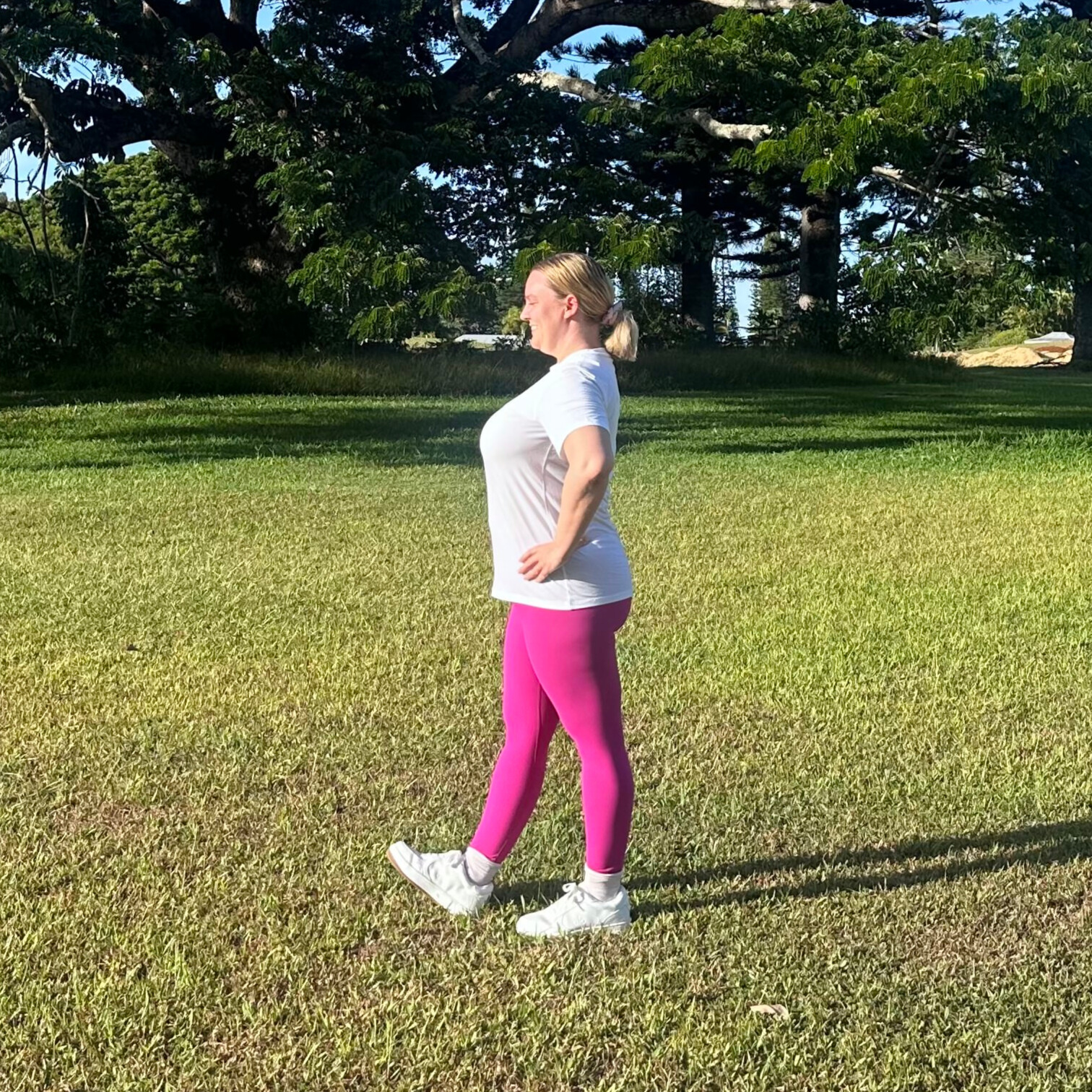 (Image credit: Mallory Fox)
(Image credit: Mallory Fox)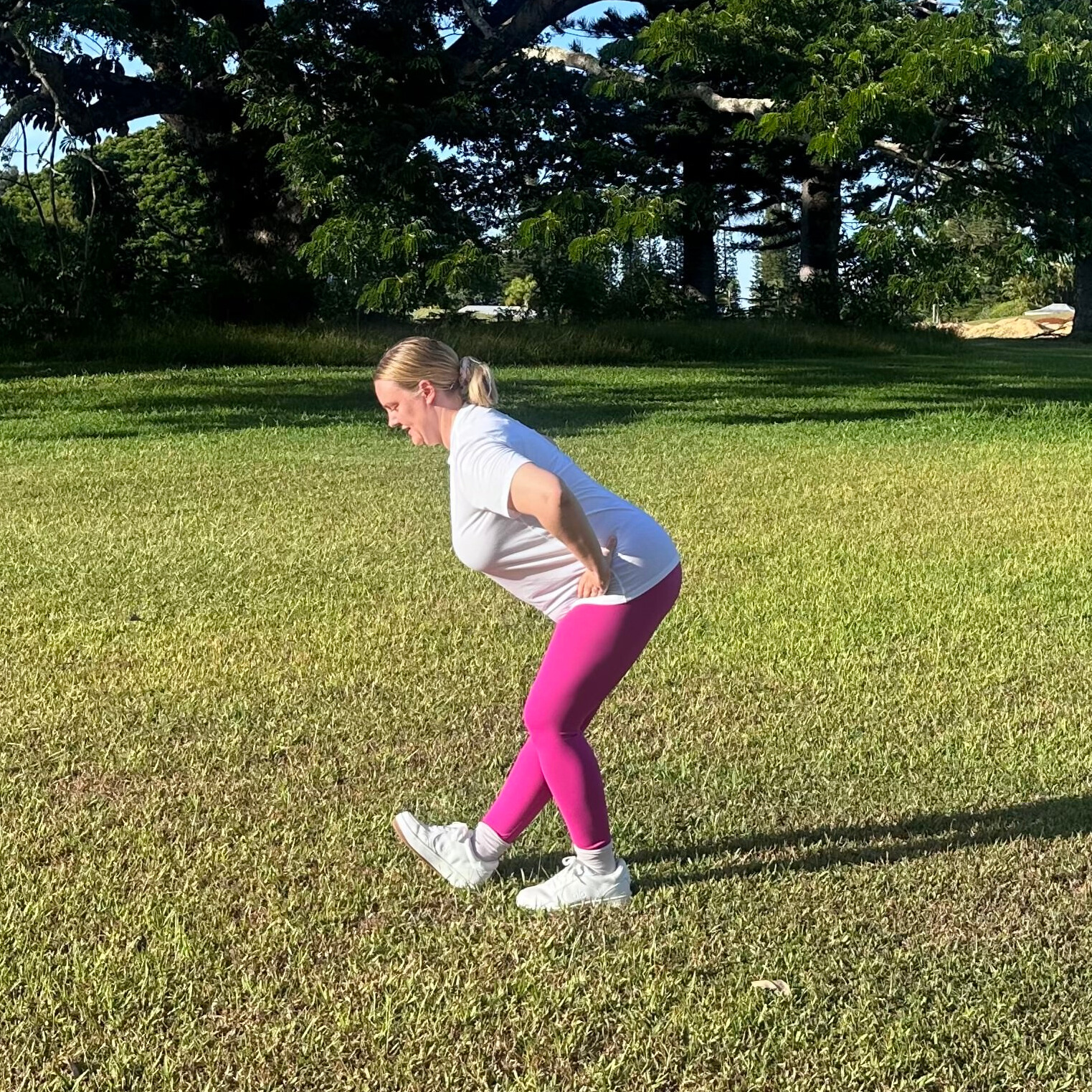 (Image credit: Mallory Fox)
(Image credit: Mallory Fox)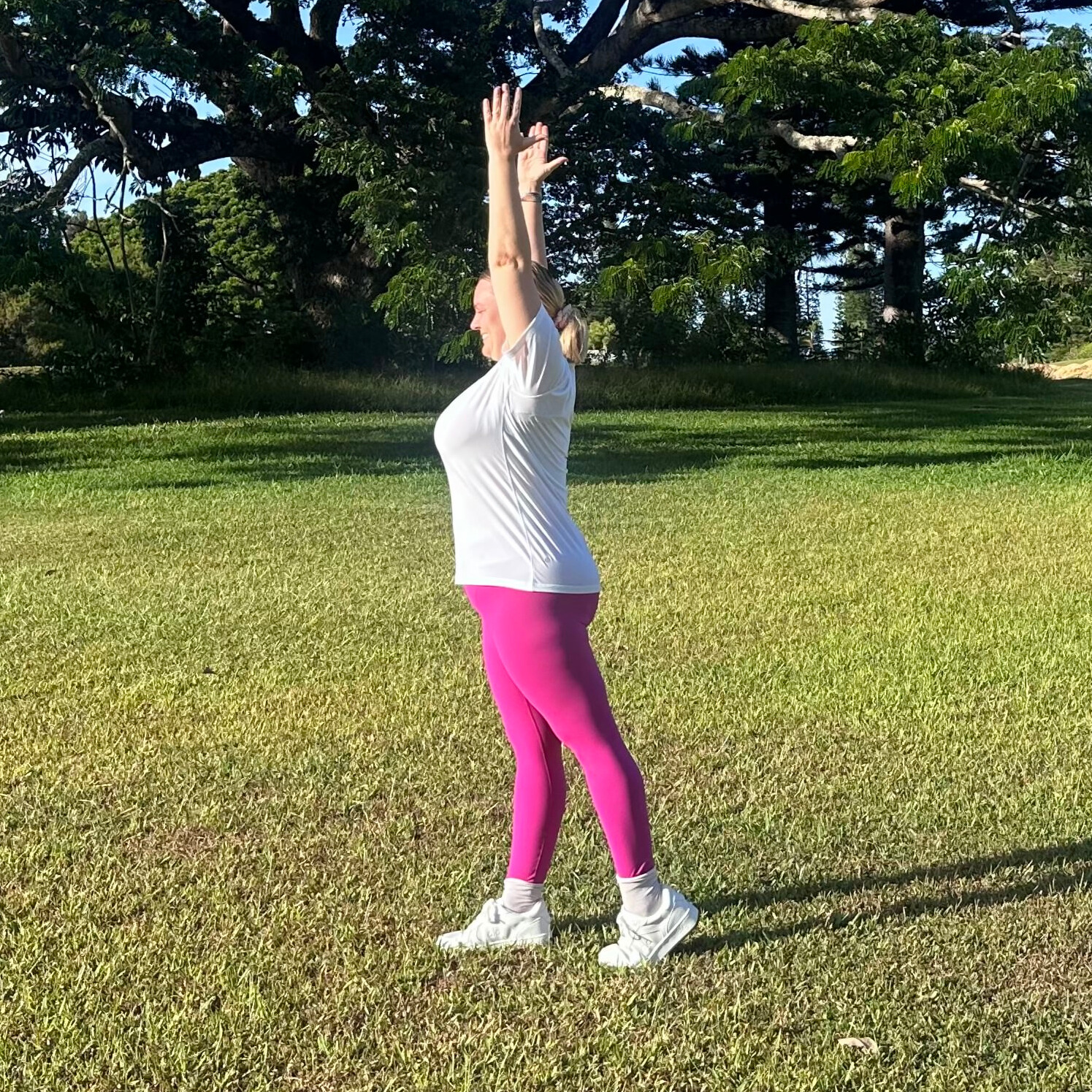 (Image credit: Mallory Fox)
(Image credit: Mallory Fox)
Reps: 8-10 each side
Stand with your feet hip-width apart and step your right foot forward, keeping your right leg straight and placing the heel on the floor, lifting your toes towards your shin. Squeeze your glutes and stand upright.Place your hands on your hips to ensure your hips remain square and, keeping a flat back throughout, hinge forward at your hips, pushing your butt back and bending your left knee slightly if needed. You should feel a stretch in the back of your right thigh.Squeeze your glutes and push your hips forward to lift your torso, raise your arms overhead and shift your weight forward over your right foot.Do all your reps on one side, then switch sides.
Why Fox recommends this stretch: “The hamstrings can become tight after prolonged walking, particularly if the core and hip muscles lack stability. A dynamic stretch helps improve flexibility and blood flow, aiding recovery. It’s a great way to warm up or cool down the body. It’s also good for developing balance and muscular control.”
Mallory Fox
Social Links Navigation
Mallory Fox is a NASM-certified personal trainer, wellness coach and master trainer. She is also a doctor of health science and a great advocate for stretching and movement for health and wellbeing.

